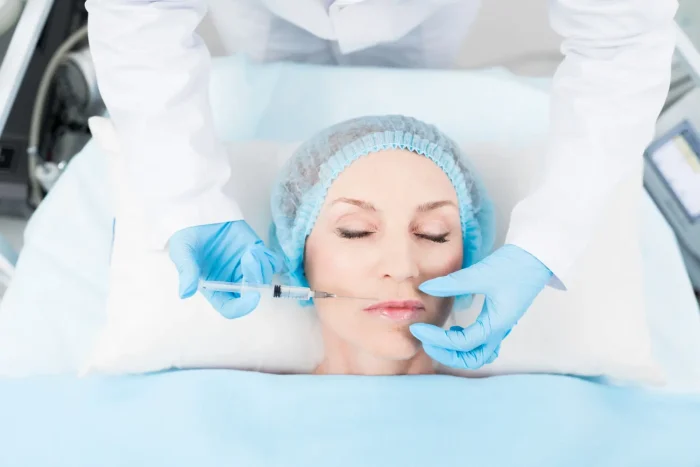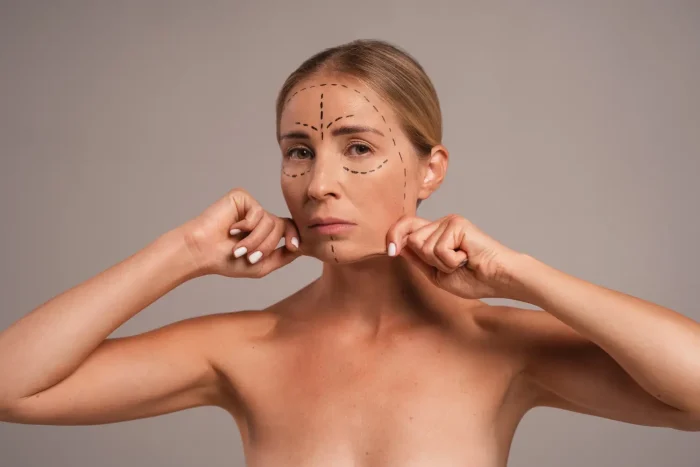Only for Licensed Professionals
Only for Licensed Professionals

Nabota FDA Approval – Is It Safe?
Nina Petrovic
Last Updated On: June 17, 2024
According to a recent study, botulinum toxin products are among the most sought-after cosmetic treatments worldwide. Amidst the plethora of options, Nabota has garnered attention for its recent FDA approval for various cosmetic indications, raising questions about its safety profile.
Nabota, also known as Jeuveau, has undergone rigorous evaluation to secure its FDA approval, ensuring its safety and efficacy. With its purity of up to 98.7% and stringent quality control measures, Nabota boasts a stellar safety profile, offering patients peace of mind when considering cosmetic enhancements.
This article will delve into Nabota’s FDA approval process, examining the stringent standards it must meet to ensure safety and efficacy.
Key Takeaways
- Nabota has received FDA approval, indicating its safety and efficacy for medical use.
- Clinical trials have demonstrated the effectiveness of Nabota in treating various medical conditions.
- Nabota’s safety profile includes common and rare side effects, which have been observed and documented during clinical studies.
- Regulatory considerations and post-marketing surveillance ensure ongoing safety monitoring of Nabota.
- Patient selection and counseling are crucial for optimizing treatment outcomes and minimizing risks associated with Nabota treatment.
About: Operating since 2016, Med Supply Solutions is known for being one of the industry’s top and trusted suppliers of cosmetic and viscosupplementation products. If you’re looking to buy Nabota online, contact our sales department for more information.
Clinical Trials Supporting Nabota’s FDA Approval
Nabota’s FDA approval was based on solid research demonstrating its safety and effectiveness for treating moderate to severe frown lines in the glabella region. Daewoong Pharmaceutical conducted thorough clinical trials, proving Nabota’s efficacy and securing its place in the competitive U.S. botulinum toxin market under Jeuveau.
Nabota’s comparison to other botulinum toxin treatments showed that it effectively reduces frown lines, with results comparable to or superior to competitors like Botox, Dysport, and Xeomin.
Image courtesy of Kongju Clinic
Clinical trials focused on the glabella region, between the eyebrows, where moderate to severe frown lines appear. Nabota’s performance in smoothing these lines met the primary endpoints.
Safety was a top concern. Common side effects included minor pain at the injection site, headache, and temporary muscle weakness.
Image courtesy of Vital Spring – Tartous
Another key finding was efficacy. Participants reported visible improvements in their frown lines within days after treatment, with lasting effects up to several months. Patients saw noticeable differences in their before-and-after appearances, affirming Nabota’s effectiveness, as reported in multiple reviews.
Safety Profile of Nabota
Nabota has shown promising results in treating frown lines, but it has its share of side effects. Medical professionals have carefully documented these reactions during clinical trials to understand Nabota’s safety profile.

- Most people experience mild pain at the injection site right after getting Nabota. This discomfort is usually short-lived.
- Some patients reported slight swelling where Nabota was injected. This typically goes down a few days after treatment.
- Redness around the injection area is another common side effect that fades away.
- A few individuals noticed bruising at the spot where they received their Nabota shot. Like other side effects, this, too, eases over time.
- Headaches were observed in a small percentage of patients after receiving Nabota injections, often subsiding within 48 hours.
- Muscle weakness near the treated area can occur but generally resolves without extra care.
- Patients have also mentioned feeling tired or having general fatigue following their Nabota treatment sessions.
- Spirit drooping eyelids or eyebrow sagging was noted as a relatively rare but possible side effect of using Nabota.
Nabota treatments may lead to common side effects and less severe but frequent reactions. Allergic reactions like rash, itching, swelling, temporary muscle weakness, eyelid drooping, difficulty swallowing, and irregular heartbeat have been reported. Some patients also experienced temporary headaches. In choosing between Nabota vs Botox, understanding these rare side effects is crucial in assessing the overall safety profile of Nabota treatments.
Regulatory Considerations and Post-Marketing Surveillance
Nabota received approval from the Korean Ministry of Food and Drug Safety (MFDS), establishing its safety and efficacy for cosmetic use. This approval allowed Nabota to be marketed and used widely within South Korea and other regions that recognize MFDS approval.

While Nabota itself is not FDA-approved, its identical formulation is approved under the brand name Jeuveau by Evolus, Inc. Jeuveau was approved by the U.S. Food and Drug Administration (FDA) in 2019 for the temporary improvement of moderate to severe glabellar lines. The FDA approval process for Jeuveau involved rigorous clinical trials to demonstrate its safety and effectiveness, ensuring it meets stringent U.S. regulatory standards.
Post-marketing surveillance is a crucial aspect of ensuring the ongoing safety and efficacy of Nabota injections. This process involves continuous monitoring and assessment of the product once it has been released to the market. Key components of post-marketing surveillance for Nabota include adverse event reporting, where healthcare professionals and patients report any side effects associated with Nabota injections.
These reports are collected and analyzed to identify patterns or emerging safety concerns. Regulative agencies such as the MFDS and FDA maintain databases and collaborate with Daewoong Pharmaceutical to collect accurate data.
Regulatory agencies sometimes mandate post-marketing studies to evaluate Nabota’s long-term safety and efficacy further. These studies provide valuable data on the product’s performance in a broader, real-world population compared to the controlled environment of pre-approval clinical trials.
Through rigorous regulatory approvals and continuous monitoring, Daewoong Pharmaceutical and regulatory agencies work together to maintain high patient safety standards and product quality. This ongoing commitment to safety helps build trust among healthcare providers and patients, supporting the widespread use of Nabota in aesthetic treatments worldwide.
Patient Selection and Counseling for Nabota Treatment
Selecting appropriate candidates for Nabota treatment and providing thorough patient counseling is crucial for ensuring safety and effectiveness. Ideal candidates are adults with moderate to severe dynamic facial wrinkles, such as glabellar lines, crow’s feet, and forehead lines, who are in good general health and have no known allergies to botulinum toxin type A.
Patients with neuromuscular disorders, a history of severe allergic reactions to botulinum toxin products, active infections at the injection sites, or those who are pregnant or breastfeeding should avoid Nabota treatment.
Patient counseling should cover expected outcomes, potential risks, and limitations. It’s important to manage expectations by explaining that results are temporary, typically lasting three to six months and that maintenance treatments are necessary. Common side effects like localized pain, swelling, and bruising, as well as rare risks like ptosis and asymmetry, should be discussed.
Pre-treatment guidelines may include avoiding blood-thinning medications, while post-treatment care involves not rubbing the treated areas, avoiding strenuous exercise for 24 hours, and staying upright for a few hours post-injection. Open communication is essential for addressing concerns and understanding the treatment plan. Follow-up appointments help monitor response and plan future treatments.
Conclusion
Nabota’s FDA approval marks a big step in treatments for frown lines. The FDA green light shows that Nabota has passed strict tests for safety and effectiveness. With careful selection and advice, patients can look forward to good results. Keeping an eye on updates and data will help ensure its safe use continues. This approval opens opportunities for both doctors and patients seeking reliable solutions.
FAQs
1. Did the FDA approve Nabota?
Yes, the FDA gave its thumbs up to Nabota.
2. What is Nabota used for?
Nabota is used to smooth out wrinkles on your face.
3. Is it safe to use Nabota?
Yes, it’s safe when a trained professional does the treatment.
4. Can anyone get Nabota injections?
No, not everyone should get them; you must check with a doctor first.
5. How long do the effects of Nabota last?
The results can stick around for about 4 months before you might need another visit.
References
Sundaram H, Signorini M, Liew S, et al. Global Aesthetics Consensus. Plastic and Reconstructive Surgery. 2016;137(3):518e529e. doi:https://doi.org/10.1097/01.prs.0000475758.63709.23
Hwang W, Seong Min Kang, Sang Yoon Lee, et al. Efficacy and Safety of Botulinum Toxin Type A (NABOTA) for Post-stroke Upper Extremity Spasticity: A Multicenter Phase IV Trial. Annals of rehabilitation medicine. 2022;46(4):163-171. doi:https://doi.org/10.5535/arm.22061
Research C for DE and. Counterfeit Version of Botox Found in the United States. FDA. Published online January 7, 2021. https://www.fda.gov/drugs/drug-safety-and-availability/counterfeit-version-botox-found-united-states
Products
Cart
Log In
Newsletter
Subscribe for exclusive offers and updates on new arrivals
Share feedback at:
Working Hours
MON - SUN 9AM to 6PM EST
The Most Popular Brands
Med Supply Solutions
Support
Secure checkout is guaranteed with full adherence to PCI DSS payment standards.
Products listed here are guaranteed authentic and manufacturer-sourced.
Pay easily with trusted providers


*Google and Apple Pay are currently only available via a direct link provided by your account manager.
Copyright 2025. Med Supply Solutions